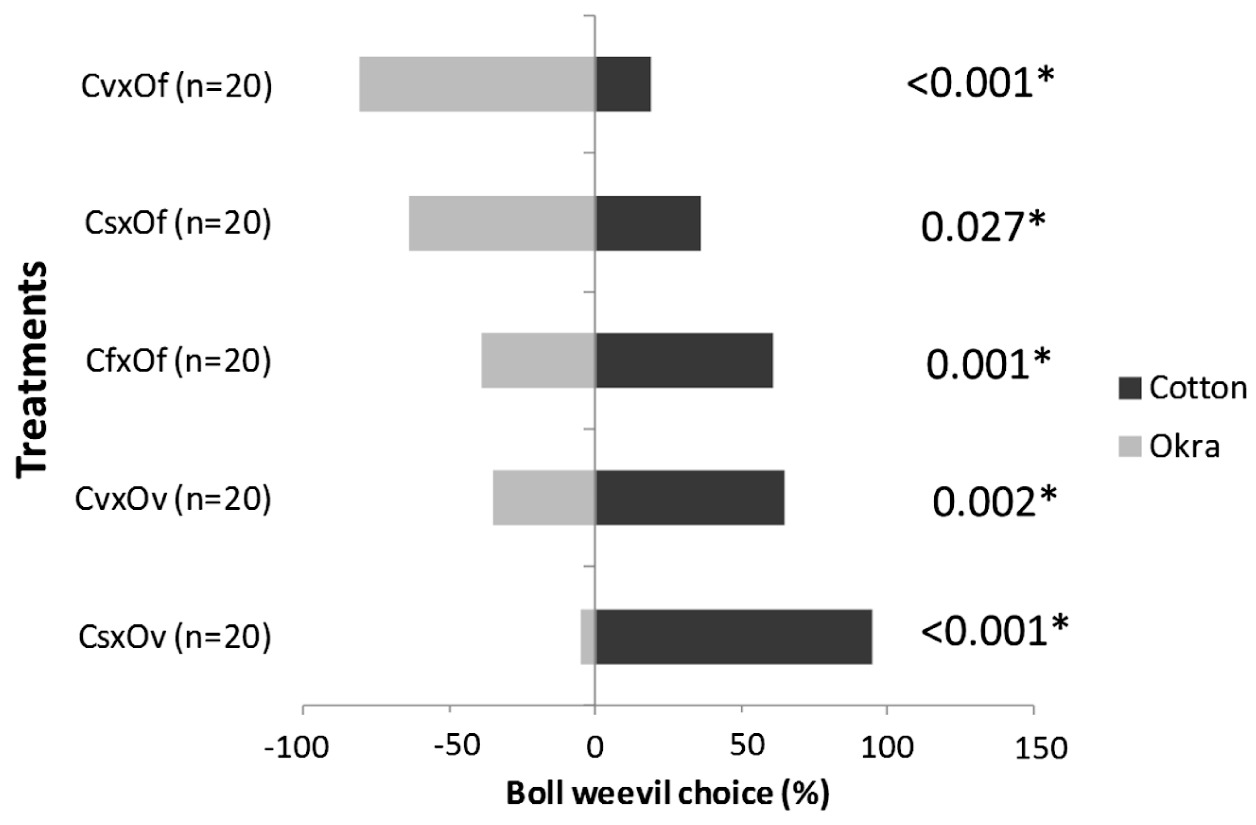Abstract
Plants that have potential as alternative food source (floral nectar, pollen and plant tissues) to the boll weevil during the intercropping season were evaluated considering the prevalent conditions of Cerrado in the Central Brazil. Initially, we tested the nutritional adequacy for the survival of the insect of flower resource (pollen and nectar) provided by eight plant species (fennel, mexican sunflower, castor bean, okra, hibiscus, sorghum, pigeonpea and sunn hemp). Subsequently, we tested if the resources provided by the selected plants continued to be exploited by the boll weevil in the presence of cotton plant, its main food source average longevity of boll weevil adults was significantly longer when they were fed on hibiscus’ flowers (166.6 ± 74.4) and okra flowers (34.7 ± 28.9) than when they fed on flowers of other six species. Subsequently, the preference of the boll weevil in the use of resources was compared between okra or hibiscus and cotton plants, in dual choice experiments. Boll weevils preferred plants of the three species in the reproductive stages than those in vegetative stages. Although the cotton plant in the reproductive stage was the most preferred plant of all, boll weevils preferred flowering okra and hibiscus than cotton at the vegetative stage.
Keywords:
Anthonomus grandis; Malvacea; okra; hibiscus

 Thumbnail
Thumbnail
 Thumbnail
Thumbnail
 Thumbnail
Thumbnail
 Thumbnail
Thumbnail
 Thumbnail
Thumbnail
 Thumbnail
Thumbnail
 Thumbnail
Thumbnail
 Thumbnail
Thumbnail







